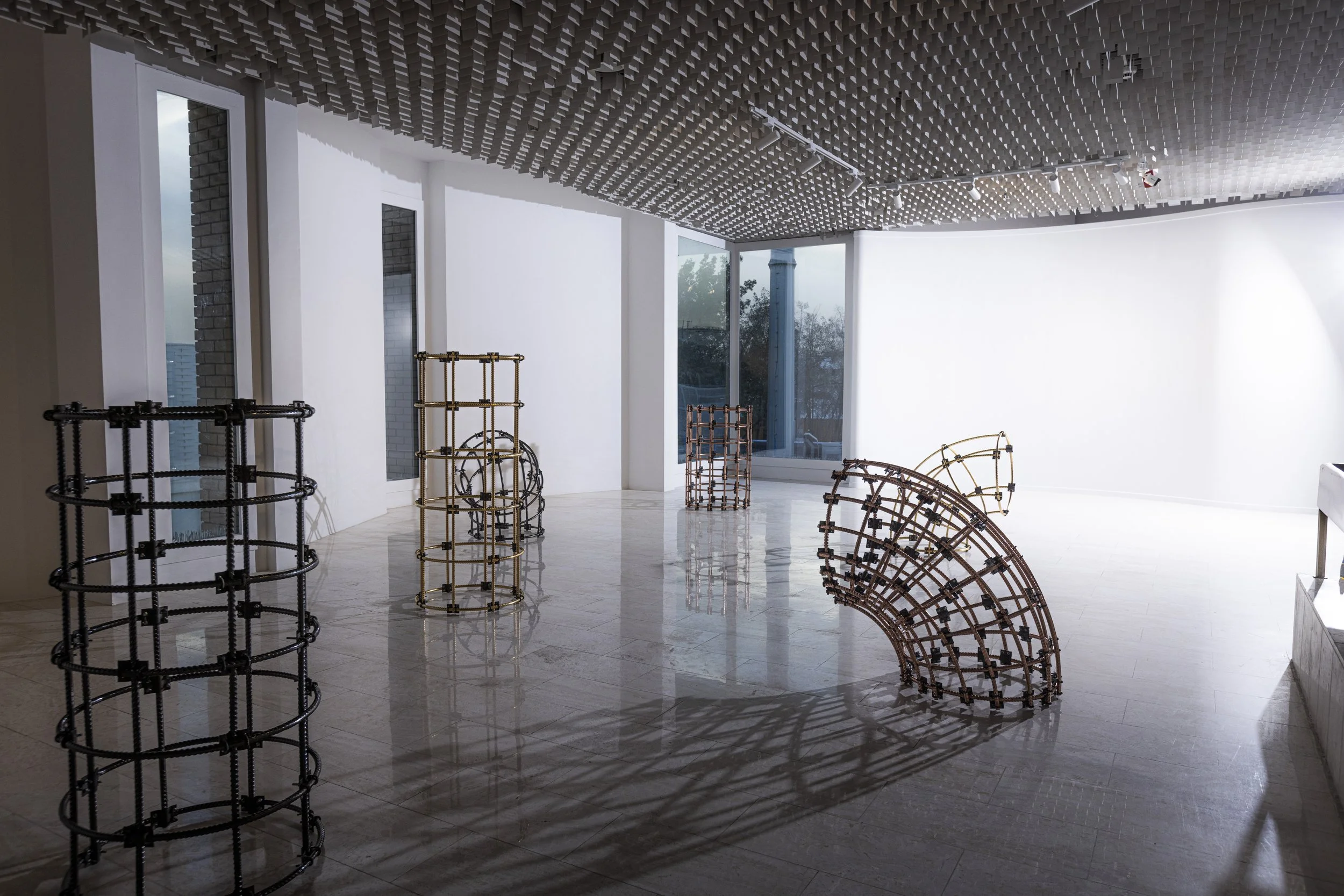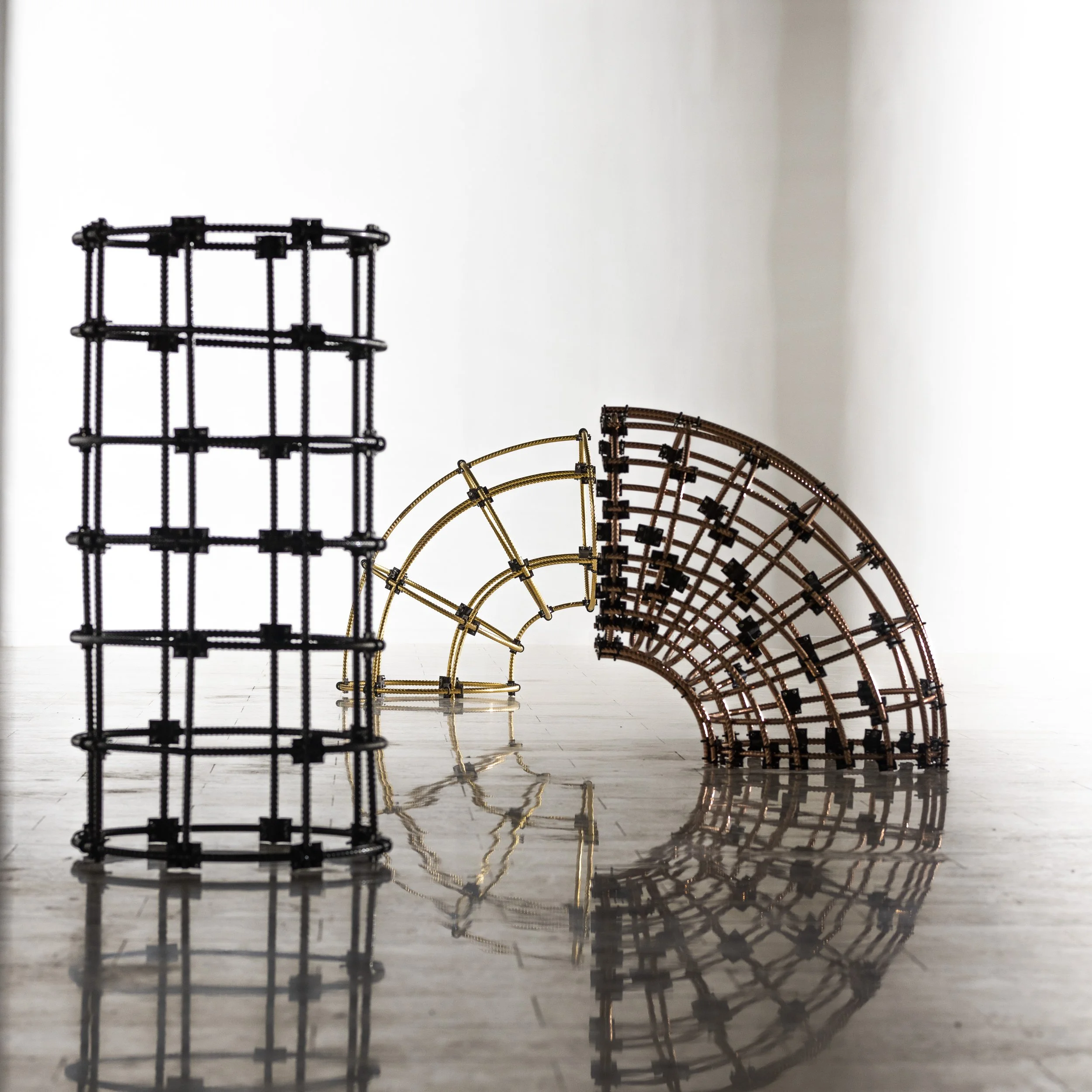






The Grid Within is an experimental installation exploring the interplay between the workings of man and nature expressed by the line and form of the grid. The artist uses steel beams forming six dynamic sculptures to recreate the cylinder pipes found in Prince Faisal bin Fahd Fine Arts Hall in Riyadh in an attempt to play on the visibility and invisibility of these objects. The grid has been used as a foundation throughout centuries in the geometric formulations of nature, art, architecture, technology and the cities we design and become no longer tangible or visible in our reality but embedded into our minds and systems of creation. Through this work, the artist attempts to analyze how our brains shape the world around us and confront us with the grid, asking how the grid can coexist within us.
The Grid Within is a revisitation of the artist's previous work, Within the Grid (2015), which began the artist's discovery of the theories behind the Grid. The work displayed in this exhibition portrays a deeper exploration into the philosophies of man inspired by the writing of Charles Darwin in "The Origins of species" and the theories of natural selection. AlHashemi examines co-creation dynamics and how humans sought to exert absolute physical dominance over the natural world while relying on genetic mutations of evolutionary processes to achieve it. The artist also taps into two schools of arts, the Bauhaus and brutalism and references the works of Agnes Martin and her use of repeated horizontal and vertical lines that give a sense of escapism and control.